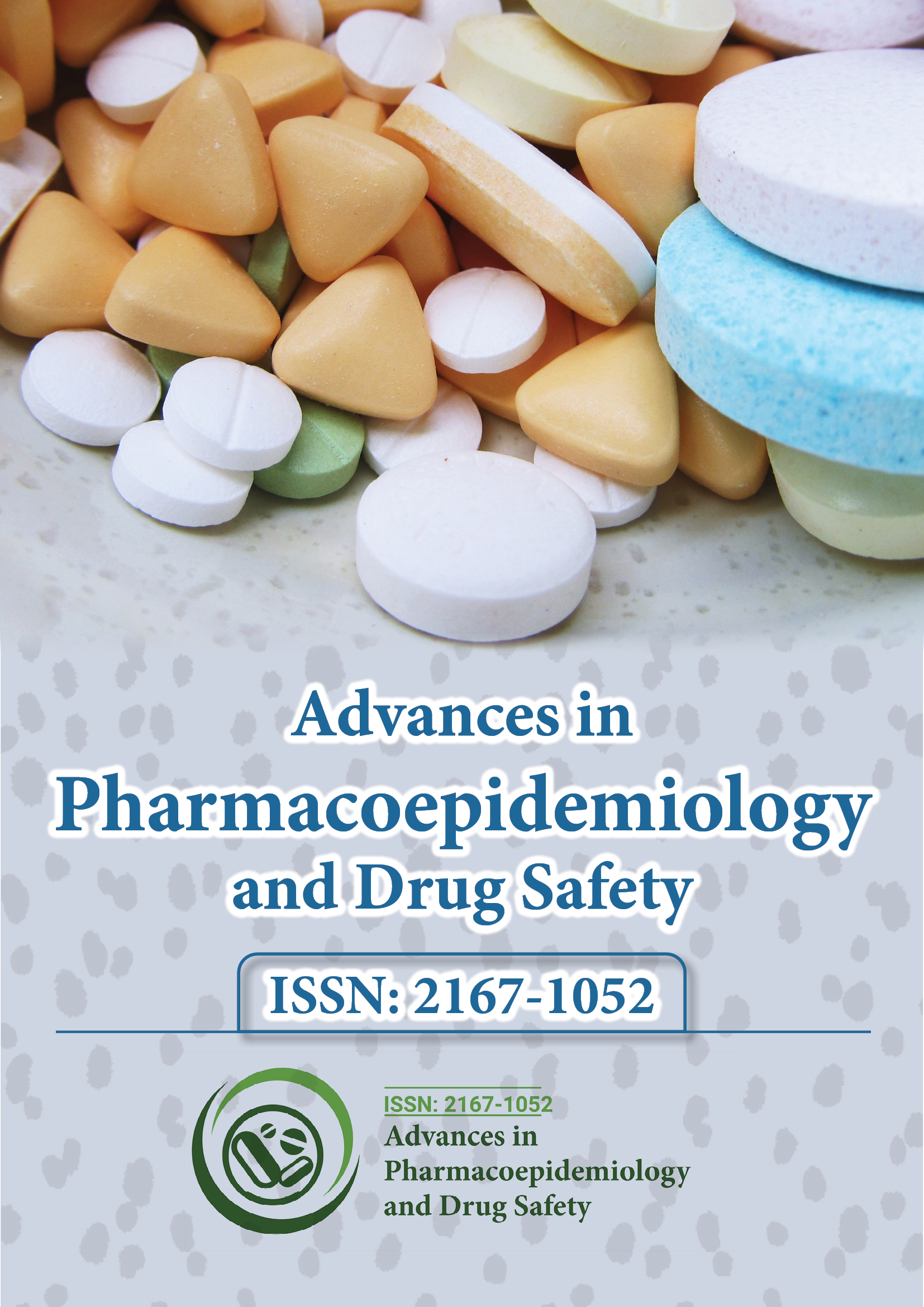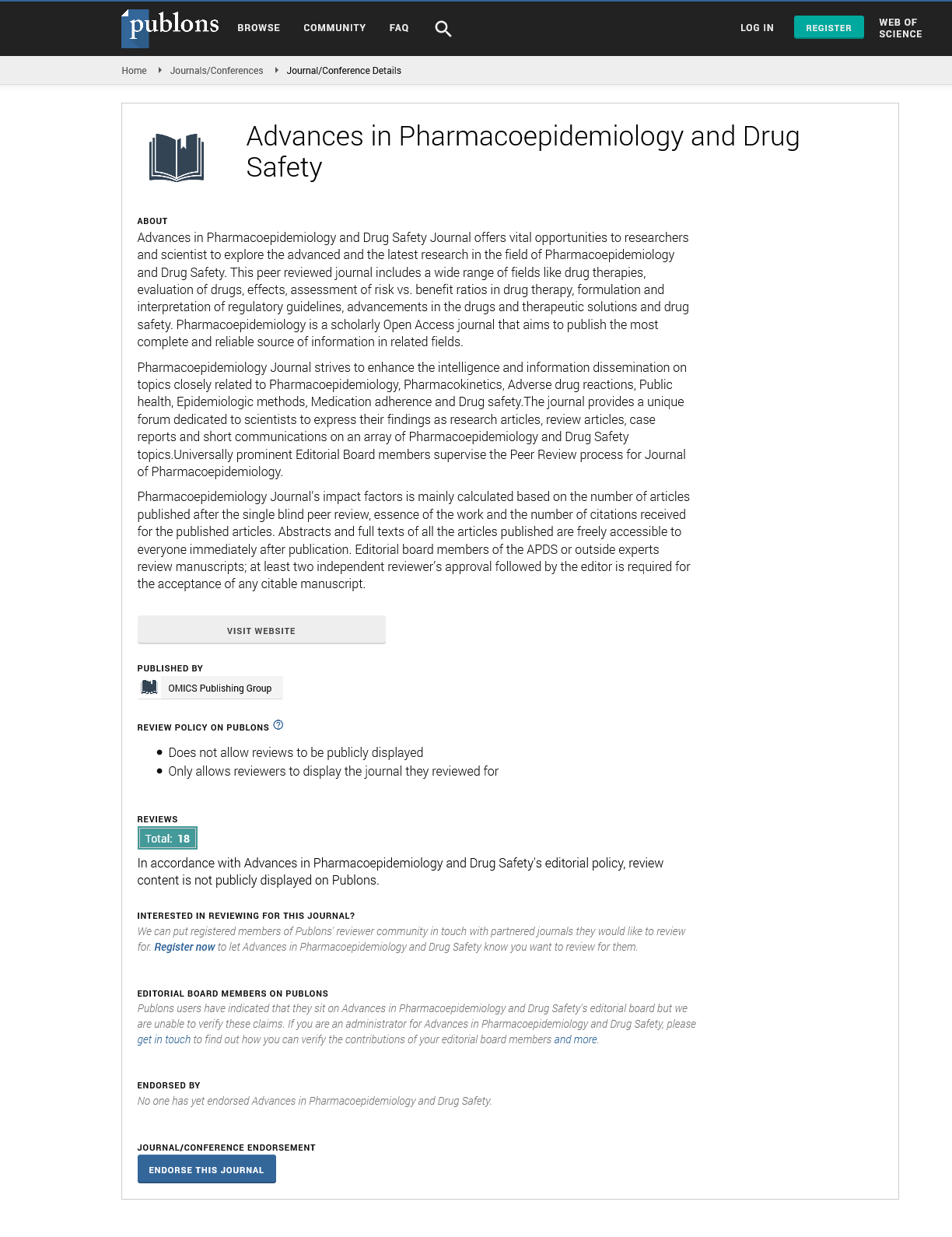Indexed In
- Open J Gate
- Genamics JournalSeek
- Academic Keys
- JournalTOCs
- RefSeek
- Hamdard University
- EBSCO A-Z
- SWB online catalog
- Publons
- Geneva Foundation for Medical Education and Research
- Euro Pub
- Google Scholar
Useful Links
Share This Page
Journal Flyer

Open Access Journals
- Agri and Aquaculture
- Biochemistry
- Bioinformatics & Systems Biology
- Business & Management
- Chemistry
- Clinical Sciences
- Engineering
- Food & Nutrition
- General Science
- Genetics & Molecular Biology
- Immunology & Microbiology
- Medical Sciences
- Neuroscience & Psychology
- Nursing & Health Care
- Pharmaceutical Sciences
Opinion Article - (2023) Volume 12, Issue 5
Transforming Healthcare: Emerging Innovations in Pharmaceutical Approaches
Ktoof Leo*Received: 17-Aug-2023, Manuscript No. PDS-23-23626; Editor assigned: 21-Aug-2023, Pre QC No. PDS-23-23626 (PQ); Reviewed: 04-Sep-2023, QC No. PDS-23-23626; Revised: 11-Sep-2023, Manuscript No. PDS-23-23626 (R); Published: 19-Sep-2023, DOI: 10.35248/ 2167-1052.23.12.332
Description
Pharmaceutical methods are the foundational element of the pharmaceutical industry. These methods encompass a wide range of techniques, from drug discovery and development to quality control and manufacturing. The rapid evolution of technology and scientific understanding has led to significant advancements in pharmaceutical methods over the years.
Drug discovery and development
High-Throughput Screening (HTS): High-throughput screening is a vital method in drug discovery. It involves testing thousands of compounds simultaneously to identify potential drug candidates. Automation and robotics have revolutionized HTS, making it faster and more efficient. Advancements in data analytics and artificial intelligence have also enhanced the analysis of HTS results, allowing researchers to identify promising compounds with greater precision.
Virtual screening: Virtual screening involves using computer simulations to predict how a drug candidate will interact with a biological target. This method has gained prominence due to its cost-effectiveness and speed. Virtual screening is complemented by molecular dynamics simulations, which provide insights into the dynamic behavior of drug-receptor interactions.
Structure-based drug design: Advancements in structural biology, such as X-ray crystallography and cryo-electron microscopy, have allowed researchers to determine the three-dimensional structures of drug targets. This information is crucial for rational drug design, as it enables the development of molecules that precisely fit into the target's binding site, increasing the likelihood of success in drug development.
Pharmacogenomics: Pharmacogenomics studies how genetic variations affect an individual's response to drugs. By tailoring drug therapies to a patient's genetic profile, pharmacogenomics can enhance drug efficacy and reduce adverse effects. This method is transforming drug development by enabling the development of personalized medicine.
Quality control and assurance
Analytical techniques: Pharmaceutical methods for quality control and assurance have seen significant advances. High- Performance Liquid Chromatography (HPLC), mass spectrometry, and Nuclear Magnetic Resonance (NMR) spectroscopy are some of the key analytical techniques used to analyze drug compounds. Continuous innovation in instrument technology and data analysis has improved the accuracy and speed of these methods.
Process Analytical Technology (PAT): PAT is an approach that integrates real-time monitoring and control into pharmaceutical manufacturing processes. By constantly measuring critical quality attributes and process parameters, PAT ensures consistent product quality and reduces the risk of batch failures. This method is essential for meeting regulatory requirements and maintaining product quality.
Quality by Design (QbD): QbD is a systematic approach to drug development and manufacturing that focuses on achieving and maintaining product quality. It emphasizes a proactive rather than reactive approach, encouraging pharmaceutical companies to consider quality throughout the entire product life cycle. This method helps reduce variability and ensures consistent quality in pharmaceutical products.
Regulatory compliance: Pharmaceutical regulations are becoming increasingly stringent. Methods for ensuring regulatory compliance have evolved to meet these demands. Electronic batch records, data integrity audits, and advanced software systems are now used to maintain transparency, traceability, and compliance throughout the drug development and manufacturing processes.
Conclusion
Pharmaceutical methods have evolved significantly, driven by technological advancements, scientific discoveries, and changing patient needs. These innovations have transformed drug discovery, quality control, drug delivery, clinical trials, manufacturing, and patient care. As the pharmaceutical industry continues to evolve, it will be essential to embrace these methods to improve the development of safe and effective drugs and enhance patient outcomes. Additionally, regulatory agencies, pharmaceutical companies, and healthcare providers must collaborate to ensure that these innovations are used effectively and safely in the best interest of patients.
Citation: Leo K (2023) Transforming Healthcare: Emerging Innovations in Pharmaceutical Approaches. Adv Pharmacoepidemiol Drug Saf. 12:332.
Copyright: © 2023 Leo K. This is an open-access article distributed under the terms of the Creative Commons Attribution License, which permits unrestricted use, distribution, and reproduction in any medium, provided the original author and source are credited.

